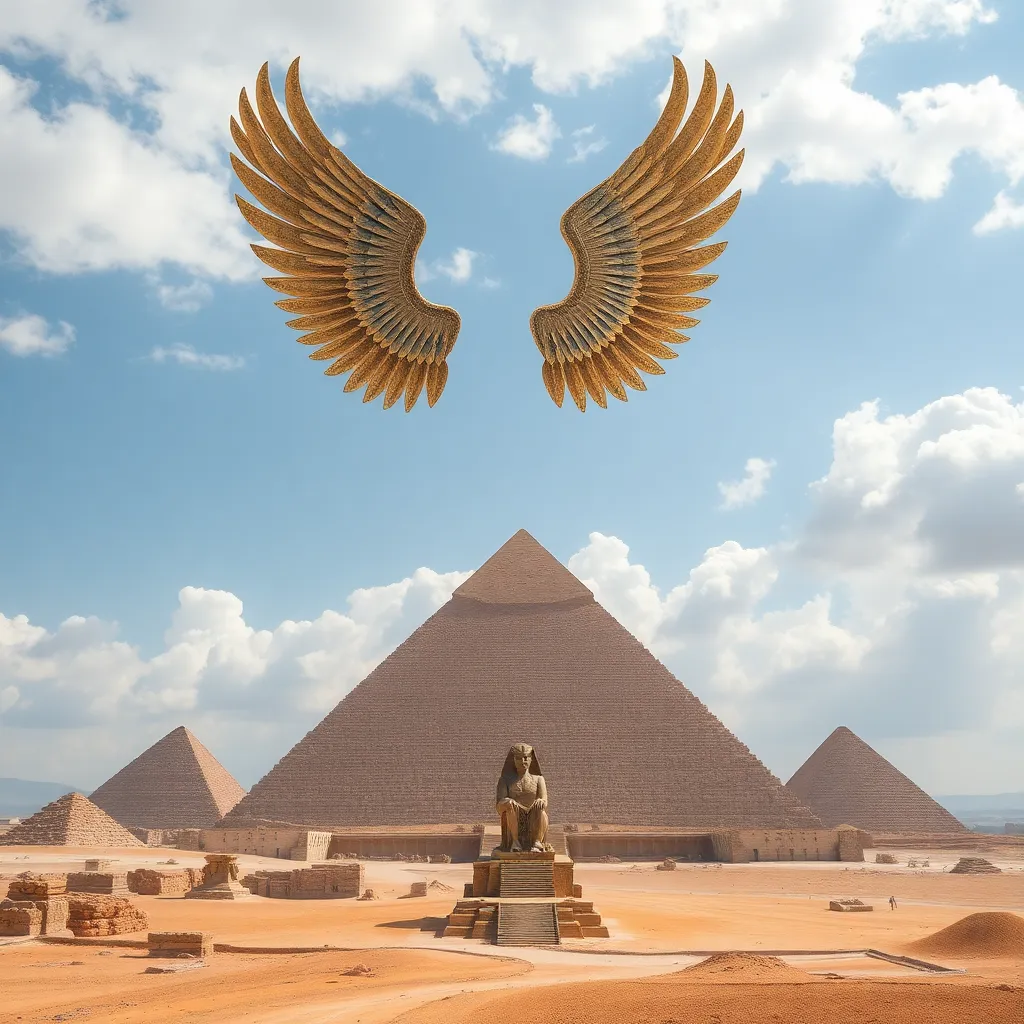The Pyramids and Their Connection to Ancient Egyptian Deities
I. Introduction
The Pyramids of Egypt stand as monumental architectural marvels, revered not only for their grandeur but also for their intricate relationship with the culture and religion of Ancient Egypt. These iconic structures were built as tombs for the Pharaohs, yet their significance extends beyond mere burial sites; they are deeply intertwined with the beliefs surrounding the gods of ancient Egypt.
Deities played a central role in the everyday life of the ancient Egyptians, influencing everything from agriculture to governance. This article aims to explore the profound connections between the pyramids and the deities, uncovering how these majestic structures served as temples to the gods and gateways to the afterlife.
II. Historical Context of the Pyramids
The construction of the pyramids began around 2700 BCE during the Third Dynasty of the Old Kingdom and continued for several centuries. The most famous pyramids, including the Great Pyramid of Giza, were built during this period, specifically for the Pharaohs who sought to secure their immortality.
- <strong. Timeline of Pyramid Construction:
- Third Dynasty: Step Pyramid of Djoser (c. 2670 BCE)
- Fourth Dynasty: The Pyramids of Giza, including Khufu’s Great Pyramid (c. 2580-2560 BCE)
- Fifth Dynasty: The Pyramids of Sahure and Neferirkare (c. 2450-2325 BCE)
Pharaohs such as Khufu, Khafre, and Menkaure were instrumental in the construction of the Giza pyramids, and their reigns marked a period of prosperity and architectural innovation. The pyramids served not only as tombs but also as symbols of the pharaohs’ divine right to rule and their connection to the gods.
III. The Role of Deities in Ancient Egyptian Religion
The Egyptian pantheon is vast and complex, comprising numerous gods and goddesses, each with specific roles and attributes. Major deities include:
- Ra: The sun god, often considered the most important deity, symbolizing life and growth.
- Osiris: God of the afterlife and resurrection, representing the cycle of life and death.
- Isis: Goddess of magic and motherhood, associated with healing and protection.
The ancient Egyptians held a firm belief in the afterlife, which was central to their religious practices. They believed in divine judgment, where the heart of the deceased would be weighed against the feather of Ma’at, the goddess of truth and justice. The outcome determined their fate in the afterlife, reinforcing the connection between the divine and the mortal.
IV. Architectural Significance of the Pyramids
The design and engineering of the pyramids reflect the advanced understanding of mathematics and astronomy possessed by the ancient Egyptians. The pyramids were constructed using millions of limestone blocks, precisely cut and aligned.
The shape of the pyramid itself is highly symbolic, representing the rays of the sun and serving as a staircase for the Pharaohs to ascend to the heavens. The alignment of the pyramids with celestial bodies, such as the North Star and the sun, underscores their religious significance, linking the Pharaohs with the gods.
V. The Pyramids as Temples to the Gods
Beyond their role as burial sites, the pyramids also functioned as temples dedicated to the gods. They were places where rituals and offerings were performed to honor the deities and ensure the Pharaoh’s safe passage to the afterlife.
- Rituals and Offerings:
- Daily offerings of food and drink were made to sustain the Pharaoh in the afterlife.
- Special ceremonies were conducted to invoke the blessings of the gods.
The relationship between the Pharaohs and the gods was deeply intertwined; Pharaohs were considered divine beings, their reigns legitimized by their connection to the deities. The construction of pyramids was thus an act of devotion and a means to secure their place among the gods.
VI. The Iconography and Inscriptions within the Pyramids
The interior of the pyramids is adorned with hieroglyphics and artistic representations that offer a glimpse into the beliefs and practices of the time. Common themes include:
- The journey of the soul through the afterlife.
- Depictions of gods and their interactions with the deceased.
- Spells and prayers intended to aid the deceased in navigating the underworld.
The Pyramid Texts, some of the oldest religious texts in the world, are found within the pyramids and provide valuable insight into the ancient Egyptian beliefs about death and the afterlife. These texts emphasize the divine nature of the Pharaoh and their aspirations for eternal life.
VII. The Legacy of the Pyramids and Their Deities
The influence of the pyramids and their associated deities extends far beyond the borders of Ancient Egypt. They have inspired countless cultures and religions throughout history, symbolizing the quest for immortality and the divine.
- Modern Interpretations: Today, the pyramids are viewed not only as historical landmarks but also as symbols of human achievement and the mysteries of ancient civilizations.
- Preservation Efforts: Ongoing research and preservation efforts aim to protect these ancient structures and further understand their significance in the context of Egyptian mythology.
VIII. Conclusion
In summary, the relationship between the pyramids and Ancient Egyptian deities is a captivating subject that intertwines architecture, religion, and culture. The pyramids serve as monumental testaments to the ancient Egyptians’ beliefs in the afterlife and the gods’ influence on their lives.
The enduring fascination with the pyramids continues to inspire exploration and study, revealing the intricate connections that define this remarkable civilization. We invite you to delve deeper into the rich tapestry of Ancient Egyptian mythology and the architectural wonders that embody their beliefs.




